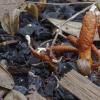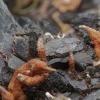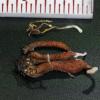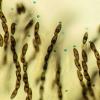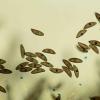
19-11-2025 13:04
 Bruno Coué
Bruno Coué
Bonjour,je sollicite votre avis pour la récote

16-11-2025 21:09
 Robin Isaksson
Robin Isaksson
Anyone recognize this acc. to pictures.? Found on

18-11-2025 13:59
Nogueira HéctorNovember 14, 2025 Brazuelo (León) SPAIN Hymenosc

17-11-2025 19:14
herman lambertApothécie discoïde 0.6 cm diam., orangeFace hym�

17-11-2025 21:57
Philippe PELLICIERBonjour,Récolté sur bois de feuillu mort dur, no

17-11-2025 21:46
Philippe PELLICIERBonjour,Récolté sur bois pourrissant de feuillu

14-11-2025 16:26
 Marian Jagers
Marian Jagers
Hello everyone, On dead wood of Cytisus scoparius

15-11-2025 23:22
Mario FilippaHello,this is what I think to be Hymenoscyphus mac

15-11-2025 20:25
 Riet van Oosten
Riet van Oosten
Hello, Found by Laurens van der Linde, Nov. 2025

https://www.inaturalist.org/observations/213846964
I have recently received some of this material (with more on the way), which I had the pleasure of scoping a few days ago, and have uploaded some micrographs to the following link:
https://drive.google.com/drive/folders/18qLCra0pSKYHKUwIvoXl11ANb_BostFF?usp=drive_link
These images will soon accompany the linked observation. The germ slit is spore-length, straight to slightly curved, and spores appear to be biguttulate when fresh, and 1-guttulate when dried. Spore measurements are as follows:
(11) 11.6 - 13.9 (15.9) × (3.6) 3.9 - 4.4 (4.9) µm
Q = (2.5) 2.7 - 3.2 (3.7) ; N = 50
Me = 12.7 × 4.3 µm ; Qe = 3
It is exceedingly rare for me to see a lignicolous Lindquistia anamorph co-occurring with any kind of teleomorph, whether in Latin America or elsewhere. I know of only a handful of examples worldwide where their connection has been observed, referring chiefly to the records of Poronia (=Podosordaria) ingii from the Canary Islands, first by Rogers & Læssøe in 1992, later by Ribes et al. in 2011. Like P. ingii, the sp. linked above is non-fimicolous. Unlike, P. ingii, this collection was found in a burn pile on charred bits of miscellaneous types of wood, in a human-disturbed/landscaped area in northern Louisiana. Its stromata are also quite a bit more pigmented, to say nothing of other macro- and micromorphological differences.

this resembles Podosordaria truncata (Pat. & Gaillard) P. Martin, likewise occurring on burnt soil and burnt wood, known from Venezuela and French Guiana and probably elsewhere in central and south America, which differs by more pulvinate stromata and larger ascospores. (Mycologia, 84(2), 1992, pp. 166-172).
Good luck!
Jacques

